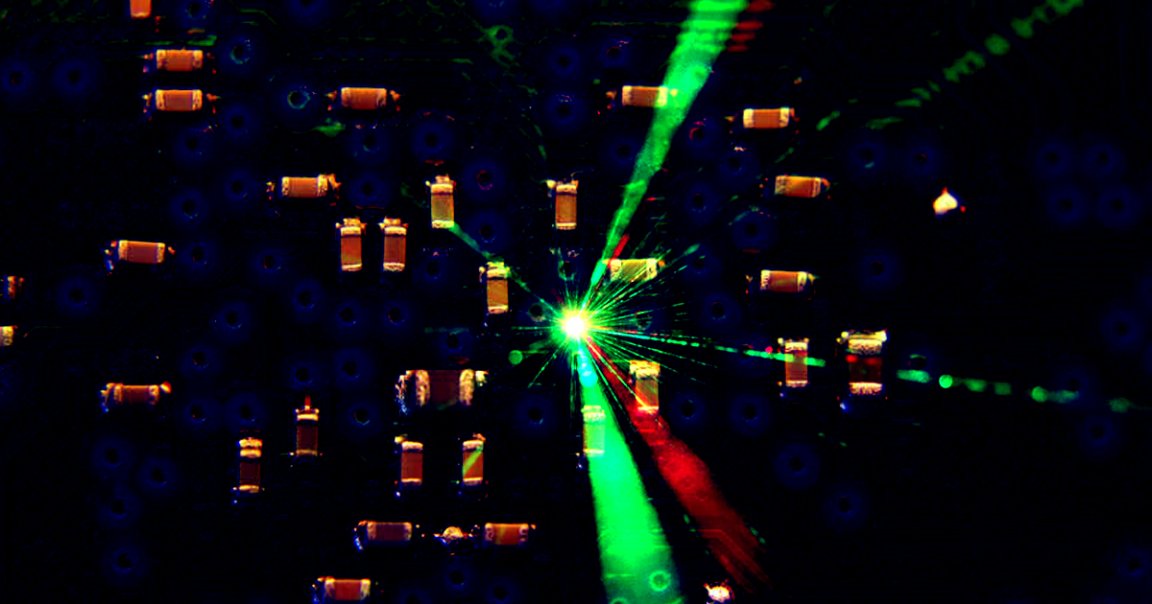
Fire Away
New models are giving physicists clues for how to build quantum circuitry or superconducting materials. In a delightful twist, the secret seems to be blasting things with lasers.
Scientists from Northeastern University and The University of Texas found that they could better manipulate the properties of a material by subjecting it to short laser bursts and powerful magnetic fields, according to research published in the journal Physical Review X. Their theoretical models could help others improve real-world electronics or build new quantum circuits.
Guess And Check
The scientists experimented with a number of different lasers to bring about different changes in their targets, according to a press release.
“When the pulse of light moves through a material, it changes the properties of the material in a very dramatic way, and often on very short time scales,” Northeastern University’s Gregory Fiete said. “The work we’ve done helps us understand what kind of pulse we should use to get certain desired effects.”
Lasers Upgraded
The models show that various laser-induced changes could make a circuit better at conducting electricity or perhaps increase its sensitivity to magnetic fields, according to the research.
“What we do in my community is try to understand the basic principles that nature operates by,” Fiete said in the press release. “Then those principles are picked up by, say, electrical engineers that want to use them to build a sensing device or a communications device. It spreads upward and outward to many different sectors.”
READ MORE: The secret to making stuff better? Shoot it with a laser [Northeastern University]
More on quantum tech: The World’s First Practical Quantum Computer May Be Just Five Years Away